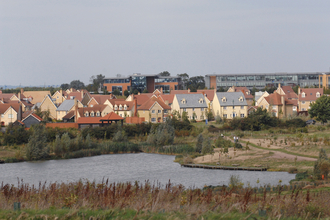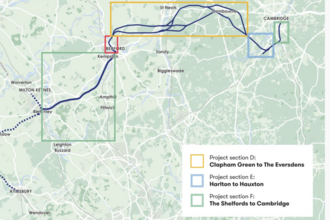Today, the Wildlife Trust for Bedfordshire, Cambridgeshire and Northamptonshire (WTBCN) and the Berks Bucks and Oxon Wildlife Trust (BBOWT) have initiated a challenge to the process whereby Highways England and the Department for Transport selected ‘Corridor B’ for the Oxford to Cambridge Expressway. The decision sets the corridor within which a new road from Oxford to the M1 in Bedfordshire will be developed.
The two Wildlife Trusts have provided information to Highways England about the environmental impact of the alternative corridors for the road, but have objected to the failure to carry out a formal Strategic Environmental Assessment (SEA) or a Habitats Regulation Assessment (HRA) to evaluate the environmental impacts of the proposals, and to look at alternatives.
These assessments are required under European Law for schemes that impact on the environment such as this. This means the true environmental effect has not properly been considered and the public has been denied the opportunity to fully scrutinise the comparative economic, societal and environmental impacts of the options before a decision has been made.
A pre-action protocol letter has been sent to the Secretary of State for Transport, Rt Hon Chris Grayling, challenging the government’s failure to commission SEA or HRA and the lack of effective public participation in the decision. If there is no satisfactory response, a claim will be made in the High Court before the end of October, after which the Court will consider the case’s merits. It is anticipated that there will be a Judicial Review hearing before the end of 2018.
Brian Eversham, Chief Executive of the Wildlife Trust BCN, said: ‘We’ve seen a worrying trend for environmental appraisals to be avoided by government bodies for decisions that will change our natural environment forever.’
The Environmental Law Foundation is supporting this action, with Leigh Day Solicitors and barristers from Francis Taylor Building providing pro-bono advice. Their support demonstrates the strong legal foundation for this case. We would like to acknowledge the work that Barrister Merrow Golden and the Horton-cum-Studley Action Group have undertaken up to this point with regard to challenging the lack of an SEA.
Tessa Gregory, Partner at Leigh Day, said: ‘It is important that decision-makers listen to local organisations and local people and imperative that environmental effects are properly assessed at the appropriate stage. Corridor selection is precisely the time for such strategic assessment to be carried out so that the environmental impacts of a plan or programme, such as the Expressway Corridor, are understood. It is disappointing that the Secretary of State has pressed ahead without such assessment, despite consultation submissions from the Wildlife Trusts’.
Most of the new road is planned in Oxfordshire and Buckinghamshire, but it would extend to meet the M1 in Bedfordshire at J13. To get there, the route will have to cross the River Ouzel to the south east of Milton Keynes. The river and its associated habitats must be taken into account in the exact route choice following corridor selection. The nearby Greensand Ridge includes a network of wildlife-rich sites including King’s and Baker’s Woods and Heaths. Rushmere Country Park, a popular public open space, could also be affected. Where the corridor moves towards the M1 around Woburn, there are woodlands which contain Wavendon Heath Ponds. Any route within this corridor would need to avoid these biodiversity hotspots.
The Department for Transport announced its choice of ‘Corridor B’ on 12 September. Read more here.


